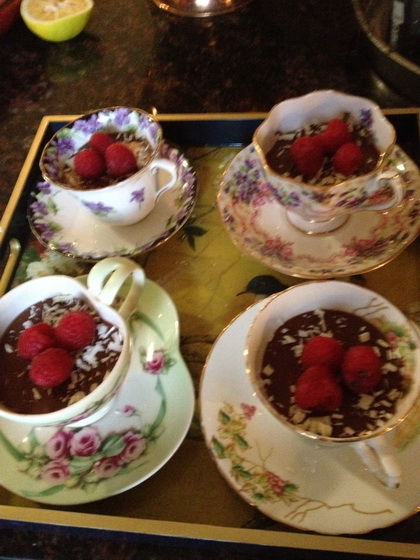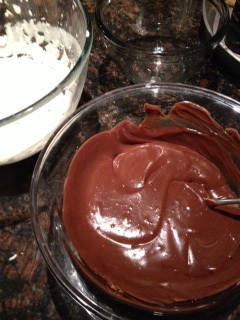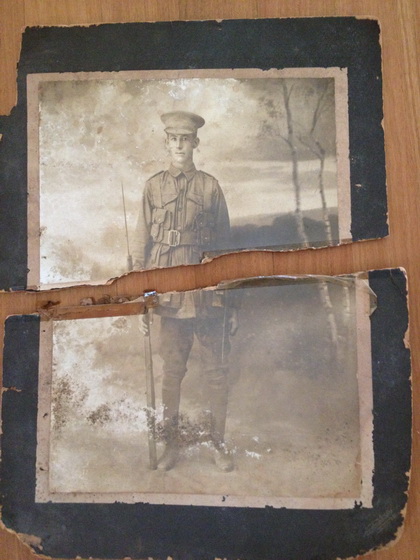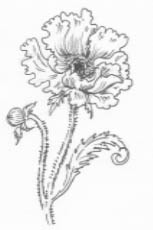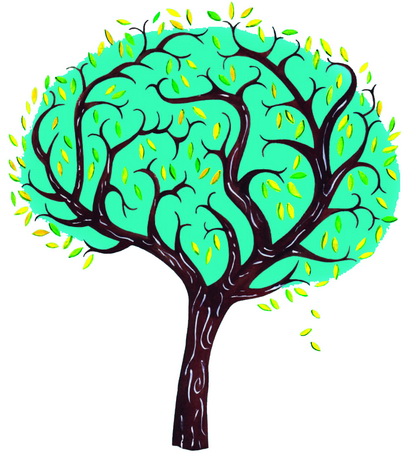
‘The Trivia Man’ (Penguin Random House) is the story of a quirky group of people who come together every Tuesday night for a trivia competition. Each week there’s a different theme – sport, music, films . . . Tonight it’s literature. See how you go on this quick quiz about books and authors. Answers at the end.
1. Which famous American writer, born in 1835, said, ‘Books are for people who wish they were somewhere else’?
2. Which of the following novels was not written by Charles Dickens?
A. Bleak House
B. Little Dorrit
C. Vanity Fair
D. Hard Times
3. Who is the author of the award-winning Australian novel The Secret River?
4. Which of these fictional detectives was created by Ruth Rendell?
A. Inspector Wexford
B. Inspector Morse
C. Inspector Dalgleish
D. Inspector Frost
5. Which Australian author won the 2014 Man Booker Prize?
6. Harper Lee’s iconic 1960 novel, To Kill a Mockingbird is set in a fictional town in which American state?
A .California
B. Alabama
C. Kentucky
D. Texas
7 .‘Last night I dreamt I went to Manderley again.’
This is the first line of which novel by Daphne du Maurier?
8.Who is the female protagonist of Jane Austen’s ‘Sense and Sensibility’?
A. Elizabeth Bennet
B. Elinor Dashwood
C. Fanny Price
D Emma Woodhouse
9. Who am I? I was born in 1879 and given the first name Stella. I had many suitors including Andrew ‘Banjo’ Paterson, but I never married. Two literary awards have been named in my honour. My best known book is My Brilliant Career. I am . . .?
10. Which occupation do the following characters have in common?
Jo March from Louisa May Alcott’s Little Women
Paul Sheldon from Stephen King’s Misery
Anne Shirley from L. M. Montgomery’s Anne of Green Gables
Juliet Ashton in The Guernsey Literary and Potato Peel Pie Society
Answers
1. Mark Twain
2. C. Vanity Fair by William Thackeray
3. Kate Grenville
4. A. Inspector Wexford
5. Richard Flanagan
6. B. Alabama
7. Rebecca
8. B. Elinor Dashwood
9. Miles Franklin
10. They are all writers
Deborah O’Brien
First written for Random House Blog June 2015
Five Things I Love about Writing Fiction
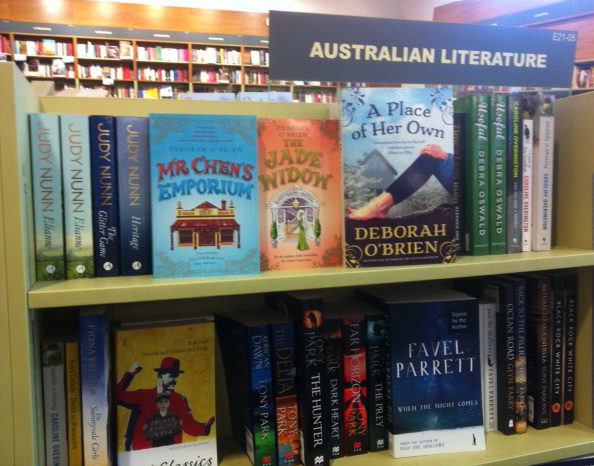
For as long as I can remember, I’ve written and illustrated stories. In primary school I filled the back pages of my exercise books with romantic tales and drawings of the heroines. After my parents tucked me in at bedtime, I’d lie in the dark, inventing adventures in my imagination. They were so exciting they kept me awake . . . or so scary they gave me night terrors. I sometimes wondered whether I shouldn’t have been counting sheep instead.
As an adult, I’ve written in various forms – short stories for myself, non-fiction books and magazine articles for publication. But it wasn’t until seven years ago that I actually began writing a novel. The process quickly became all-consuming. Meanwhile, the ironing pile grew inexorably higher, a layer of dust settled comfortably on the furniture, and my family found themselves dining ever more frequently on takeaway dinners. That was five books ago, and nothing has changed.
So what is it about inventing stories that’s so addictive? Here are the things I love about writing in general, and fiction in particular.
1. The sense of escapism
Story-telling allows me to escape into a world of make-believe, to explore physical and psychological places that I wouldn’t necessarily visit in the real world. There are occasions, however, when my story becomes so dark and confronting that I’ve very glad to return to reality.
2. The element of wish-fulfilment
As an exercise in wish-fulfilment, fiction is enormous fun. Think of all those dream heroes who populate romance novels. In my own case, I’ve always dreamt of owning a small herd of alpacas. I can’t have them in real life, so I’ve put them into my books!
3. The magic of words
All my life I’ve been fascinated by words. When I turned eight, my mum gave me pocket money, expecting me to spend it on chocolates or lollies. Instead, I saved up the weekly windfall until I could afford a ‘Pocket Oxford Dictionary’. I still love the magic and power of language. Like a child playing with building blocks, it makes me happy to construct a narrative, phrase by phrase, sentence by sentence.
4. The journey of discovery
In everyday life I’m fond of checklists and agendas, but as a novelist, I’m quite the opposite. I have no plan beyond an initial concept and a few guideposts. It’s liberating to allow the narrative to unfold, driven by the psychology and actions of the characters. For me, writing is essentially a process of exploration and discovery and I enjoy the surprises it brings me.
5. The feedback
I’ve always believed a book only comes alive when it finds a reader. I feel honoured that people make the choice to read something I’ve written. And I’m doubly honoured whenever they take the time to send me their comments.
Deborah O'Brien
First written for Random House Blog: April 2014
Revised August 2016
Recipe: Yummy Chocolate Mousse
Back in the Seventies, chocolate mousse was everyone's favourite dessert. Then, like beef stroganoff, it went out of fashion. But what goes around comes around and now it's back, bigger than ever. All the celebrity chefs have a take on it - George Colombaris, for example, makes his mousse with olive oil while Heston Blumenthal uses only two ingredients: chocolate and water!
My own chocolate mousse is an adaptation of a recipe from 'The Terrace Times Cookbook' and I've been making it for yonks. The secret is the marshmallows.
As you can see in the photo, I serve my mousse in vintage tea cups. I'd like to say I thought of this myself but actually I stole it from Shannon Bennett on MasterChef. But it's a great way to show off your tea cups or demitasses, particularly if, like me, you have a collection!
Ingredients:
(inspired by the 'Terrace Times Paddington Cookbook')
- About 180 to 200 grams best quality dark cooking chocolate (broken into pieces)
- 2 tablespoons sugar (less if you like)
- 3/4 cup full cream milk
- 22 white marshmallows
- 1 and a half teaspoons instant coffee
- 2 cups whipped cream (approx.) You can always serve any leftover cream as an accompaniment.
Method:
Melt the first five ingredients in a double boiler (but NOT the cream).
Stir continuously and ensure the marshmallows are fully melted - otherwise the mixture will be grainy.
Allow to cool. (Continue stirring regularly while cooling to avoid graininess.)
Gently fold in whipped cream until you are happy with the colour and texture.
Spoon the mix carefully into tea cups. Chill in the refrigerator to set.
I decorated with grated white chocolate and fresh raspberries. This is also great served with vanilla bean ice-cream to break through the richness of the mousse.
Serves six approx. depending on size of the cups and how high you fill them. If you have some mousse left over, all the better for a midnight feast!
Deborah O'Brien
23 July 2016
'The Trivia Man' by Deborah O'Brien

'The Trivia Man' explores the theme of being different and trying to fit in. Was there a particular motivation that led you to write about these matters?
As a child, I was a bookish little girl who desperately wanted to be like her peers but didn’t know how. I think that’s why the need to belong is a theme which has emerged in all my novels, but in differing ways.
I really enjoyed the contrast between the characters of Kevin and Maggie. Where did the inspiration for your main characters come from?
I suppose you could say that they reflect two different aspects of my own personality – Kevin is the nerdy ‘quiz kid’ side and Maggie the empathetic side. However, I wasn’t aware of those connections when I was writing the manuscript. It was only when I read the first draft that I realised why those two characters were so easy to write!
Both Kevin and Patrick could be characterised as being on the autism spectrum. Do you have experience with people who are, to use a popular term, ‘on the spectrum’? Or were there other reasons that prompted you to create characters with these sorts of issues?
In my teaching career I encountered a number of young people with special needs including some on the so-called ‘autism spectrum’. I tried very hard to view my students as individuals and not to define them by their ‘condition’. So often I’ve heard someone say: ‘He’s ADHD’ or ‘She’s Asperger’s’ and I’ve longed to retort: ‘No, they’re not! They happen to be someone diagnosed with that disorder. There’s a big difference.’
What led you to base your story around a trivia competition?
On a personal level, I’ve always been a trivia buff, even as a child. From a writer’s point of view, a trivia competition provides the perfect structure and framework for a novel. That’s important for me because I don’t plan my plots so I need those kind of constraints to keep me in line. Every chapter is a week of the competition, culminating in the big reveal at the end of the season when the winners are announced.
Have you been involved in a weekly trivia competition?
Years ago I took part in a seasonal trivia competition in which there was a karaoke session at interval. On the first night I was caught off guard and found myself up on the stage with the rest of my team, singing a Tina Turner song. The following week I disappeared into the loo at the end of round four and didn’t emerge until the singing was over! After that, I used to slip outside at interval, only to find the smokers in the audience had done the same thing. In my novel the karaoke session affords Kevin and Maggie a chance to have a conversation away from the other members of the team.
What was the most difficult question that you were able to answer?
'Which animal doesn’t belong: wombat, koala, kangaroo or echidna?'
This question wasn’t necessarily the most difficult I’ve ever encountered but it certainly created a lot of conflict among our team members. Everyone except me chose the koala because it’s the only tree-dwelling creature in the list. I nominated the echidna as it’s the only monotreme. Being the team recorder, I wrote down ‘echidna’ – against the wishes of the rest of the team. Thank goodness it turned out to be the answer that the quizmaster had on his card, or I would have been in big trouble!
Are you currently working on a new book?
Yes, it’s called 'The Rarest Thing' and is set in the Victorian High Country in 1966. The story is inspired by a true event – the discovery of a live mountain pygmy possum, a creature thought to have been extinct for millennia. My protagonists are a female palaeontologist and an international wildlife photographer thrown together in a quest to locate and photograph the tiny possums in the wild.
Where do you generally find inspiration for your novels?
The inspiration comes from many different sources, including my own experiences mixed with a good dose of imagination. I always begin with a strong premise which propels me through the story. In the case of 'The Trivia Man', it was the idea of a middle-aged quiz champion who is always on the outside looking in. That concept gave me so many intriguing possibilities to work with.
Do you have a particular writing routine and why do you think it works for you?
When it comes to routine, I’d love to say that I disappear into my ‘writing cave’ for three hours in the morning and three hours in the afternoon and write 2000 words a day. But I have no routine. Writing fits into my life whenever I have free time. I wish it was the other way around!
If you could invite three of your favourite authors to dinner—living or dead—who would you choose to invite?
What an intriguing question! My first guest would be the inimitable Neil Gaiman who writes across a range of genres and happens to be one of the most compelling and entertaining speakers I’ve ever heard. As my second guest, I’d choose someone whose writing has been a great influence on me – Lewis Carroll. Even today, in spite of the swag of biographies written about him, he remains an enigmatic figure. And finally I’d love to meet F. Scott Fitzgerald, author of one of my favourite novels, 'The Great Gatsby'. I’m sure he would have some incredible stories to tell about the halcyon days of the 1920s.
Interview with Alison Fraser in conjunction with the publication of the 'Reader's Digest' condensed version of 'The Trivia Man' in the April 'Special Edition'.
![]() A Gallipoli Story: Finding Uncle Arthur
A Gallipoli Story: Finding Uncle Arthur

For years I’ve been searching for a picture of my great uncle Uncle Arthur, who died at Gallipoli in June 1915, less than six months after he enlisted. Last year I wrote a blog about Arthur and used a photo of my grandfather in uniform (at left) because I didn't have a picture of his older brother.
Not long ago I received a phone call from my brother Mark and his wife Jo. In the process of cleaning out an old wardrobe at my aunt’s place, they’d made an interesting discovery – a large portrait of a World War I soldier wrapped in ageing brown paper. The picture had been torn in half but thankfully the soldier’s face remained intact. It wasn’t a photo of our grandfather though, Mark was certain of that. So who was this mysterious young man, we wondered. Could it possibly be Grandad’s long-lost older brother?
When I saw the picture for the first time, I knew instantly who it was. He looked just like my grandfather, only taller. Six feet one quarter inch, in fact, as attested in Arthur's enlistment records. I have to confess that I shed quite a few tears at seeing the heroic uncle I’d heard about ever since I was a small child.
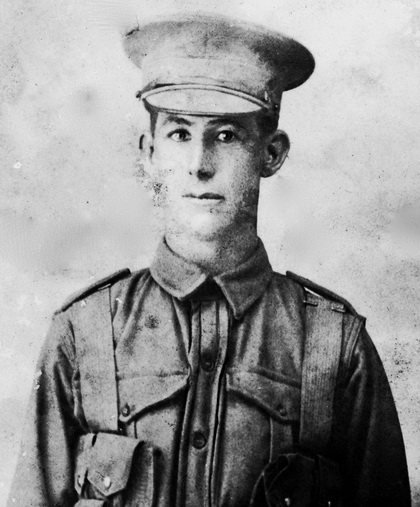
So here he is – the 22-year-old shearer from Parkes NSW who joined up on 30 January 1915. He looks so young, doesn’t he? A bit of a larrikin perhaps. His army records certainly indicate he had a healthy disregard for authority. He began his training at Liverpool Barracks on the outskirts of Sydney. For a country boy, it must have been quite an experience – away from home for the first time and raring to embark on a ‘great adventure’. Three weeks later he overstayed his leave by twelve hours and was fined five shillings. His commanding officer noted that his general character was good. By April Fools Day his skylarking had escalated. This time he was found guilty of riotous behavior, obscene language, breaking camp and using a forged pass. Major Baxter fined him forty shillings (a huge sum in those days) but deemed his general character ‘fair’.
On 10 April Arthur embarked on the HMAT ‘Argyllshire’ for the Dardanelles. On 7 June he was killed in action. His military records give no indication of what happened in the eight weeks between leaving port in Sydney and his death at Gallipoli. He was buried at Brown’s Dip (also known as Victoria Gully) just behind Lone Pine. In 1923 all 140 soldiers buried at Brown’s Dip were disinterred in the presence of chaplains, and moved to the Lone Pine Cemetery.
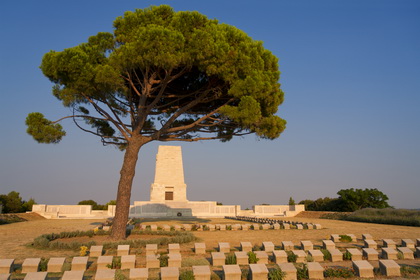
Lone Pine pic: Gary Blakeley
Arthur was just starting his life. No wife, no children, therefore no direct descendants. After his death, the army sent his father two brown paper parcels containing a disc, a purse and a personal letter. Now we also have his photograph.
Arthur John Hill
1892-1915
Poppy: DOB
Deborah O’Brien
23 April 2016
Subcategories
Home in the Highlands
Home in the Highlands blogs

